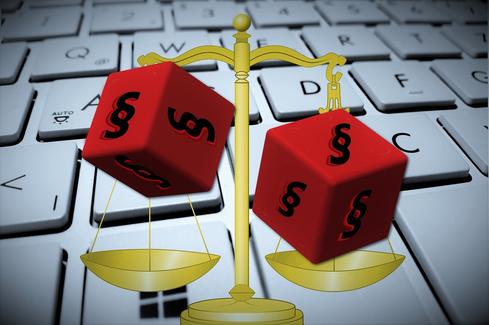Modern data-related technologies are changing the way law firms do business. IT executives across all industries will benefit from understanding how these data tools and practices are being applied to legal cases so that you can be ready if you're ever called upon by your organization's legal team. We break it down for you here.


8 iPhone Security Apps To Keep Your Data Safe
8 iPhone Security Apps To Keep Your Data Safe (Click image for larger view and slideshow.)
Change is afoot at law firms and in courtrooms as the amount and types of data continue to grow. Large cases may involve tens of millions or hundreds of millions of documents, but no client wants to pay for a page-by-page review of them. Using eDiscovery tools, predictive coding, and data science, lawyers are able to work quickly and efficiently as they prepare, present, and settle their cases. Some firms are also changing their fee structures.
IT executives across all industries will benefit from understanding how these data tools and practices are being applied to legal cases. As the keepers of your company's data, applications, and electronic communications systems, you could be brought into the front lines of a legal situation at any time. Requests for evidence in lawsuits can be sweeping, and it's important to know ahead of time how the system works so that you can be ready if you're ever called upon by your organization's legal team.
We break it down for you into four key segments: what role data plays before trial; how it's changing things in the courtroom; how data is improving the way law firms operate; and how new tools, such as natural language search, will pave the way for unprecedented approaches to practicing law in the future.
What's happening before trial
When a lawsuit commences, lawyers must conduct "discovery," which means gathering information from clients and sharing evidence with the other side. The parties must agree to the scope of discovery up front, which may involve a set of written questions (interrogatories), a review of documents related to the litigation (request for production of documents), and witness interviews (depositions).
"When I interview clients about what evidence we need to preserve for a case, it's rarely limited to Word documents, the metadata, and the emails. It's something in addition, like some kind of proprietary platform my client uses to store data that helps them operate their business," said Karin Jenson, national leader of BakerHostetler's eDiscovery advocacy and management team, in an interview. "What lawyers were doing with instinct, intuition, and judgment, they're now doing backed with lots of data."
[ Having trouble making sense of disparate data? Read Data Visualizations: 11 Ways To Bring Analytics To Life. ]
Using eDiscovery and predictive coding, BakerHostetler was able to narrow the scope of reviewable documents in one case from 800,000 to 17,000. In addition, its attorneys are able to discover patterns and relationships among documents, or among people, that might otherwise go unnoticed in a traditional, manual review of documents.
Paul Hastings, another law firm, established a data science team a little over two years ago. The team helps with investigations, litigation, regulatory compliance and enforcement matters. It is also working to improve the accuracy of merger and acquisition (M&A) due diligence. One government investigation generated more than 10 million documents. Using a sample of 50,000 documents, a keyword search yielded 20 marginally useful documents. Using semantic modeling, the data scientists came up with a set of 100 documents, 40 of which were useful and most of which were significant.
"Trying to guess a lot of [keywords] is not the best way to get information out of a dataset," said Tom Barnett, special counsel, eDiscovery and data science at Paul Hastings. He noted that the keywords individuals select tend to be "highly inclusive or highly exclusive." At Paul Hastings, "We augment search with other methods to ensure we're getting what we need," Barnett said.
Smyser Kaplan & Veselka taps a number of data sources to streamline depositions. Depositions include background questions about the witness, as well as questions about the facts of the case. A great deal of background information about an individual is now publicly available thanks to the Internet. Yet, attorneys typically still spend significant amounts of time asking questions such as "Where do you reside?" and "Who is your employer?"
"You can learn a lot about witnesses before depositions. Between social media, LinkedIn, and the writings people have that are available online, you can learn an extraordinary amount before you ever sit down and start questioning," said Ty Doyle, a partner at Smyser, Kaplan and Veselka, in an interview. "What would [previously] take 30 to 60 minutes of a deposition I [now] have in hand. So it becomes, 'Here's the information I have, and can you confirm it's accurate.'"
Data prowess in the courtroom
Attorneys are constantly attempting to manage risk throughout the lifetime of their cases. In addition to understanding the facts of the case, and anticipating the arguments their opponents are likely to make, lawyers are also wise to anticipate the likely behavior of the judge and the jury.
"You used to ask someone about a judge, but now we know the cases he's handled and his decision history. You get a complete dossier on their judicial history," said Tess Blair, practice group leader of Morgan Lewis' eData practice, in an interview.
Historically, only a few important cases were published, because litigation was a paper-intensive practice. Even with the availability of computers and database services, it was not economically feasible to achieve the kind of transparency that is possible today. Now, data is being harvested from courts throughout the U.S. Some attorneys are using the information to determine how juries evaluate cases based on similar facts.
"When you can see how juries respond to different arguments, and what verdicts are coming out, it has a strategic impact on how you present your case, not only to the jury but to the decision makers along the way," said Lamber-Goodnow partner James Goodnow. "If I know with these facts the jury does X, Y or Z, I can go to opposing lawyers, insurance adjusters, and mediators and say, 'Look at all the data I have. I can tell you what a jury is going to do with this. That's very powerful."
Fast access to data is also enabling efficiency during direct examination and cross-examination. If a witness needs to have her memory refreshed, a colleague can quickly run a search, find the document, and display it on the courtroom screen.
"That impacts strategy. It's very powerful, but it's even more powerful on cross-examination," said David Fioccola, co-chair of Morrison & Foerster's financial services litigation practice group. "You don't have the document in front of you because it's not evidence, but because it's in production, your team can pull up the document before you ask for it [and you can impeach the witness]."
Even billing is changing
Lawyers have historically billed by the hour for their work, with some exceptions. Although the amount of data related to cases is getting more voluminous and complex, clients don't want to pay more for law firms to sift through it. In fact, attorneys are being pressured more than ever to agree to flat-rate fees, contingency fees, or hybrid arrangements that involve some hourly billing and some alternative fee structure.
"We do almost all of our discovery work on an alternative fee basis, [based on] the task or the outcome. So, if I get a terabyte of data from a client, I'll tell him how much it's going to cost them. Before, we'd page through everything and just bill for our time," said Morgan Lewis' Blair.
To be able to quote a flat fee that is fair to the law firm and the client, law firms have to understand the time and costs involved in a particular kind of case.
"We're pulling information about the time we spend in documents, editing documents, how much time we spend with certain types of documents -- such as complaints, motions to dismiss or and motions for summary judgment -- categorizing those, and then figuring out how much time that takes. We're able to break down the average cost of each type of case, so we can give the client that fixed rate they're looking for," said James Goodnow of Lamber-Goodnow.
Technology enables creativity
eDiscovery and database services help law firms navigate massive volumes of information. At present, most law firms are typing in keywords and search strings, but if ROSS Intelligence has its way, attorneys and paralegals will use its IBM Watson-based app to ask questions in natural language.
"If you run a search, you're hit with 1,000 documents, so you add more filters so you can find those couple of sentences you're after," said Andrew Arruda, founder and CEO of Ross Intelligence. "Instead of bringing back documents that may be relevant based on searches, we can bring back direct passages. It also learns from interactions, unlike search."
Meanwhile, Lamber-Goodnow is using the latest technologies to improve client relations and case settlement amounts. For example, the firm issues iPads to its clients so they can easily access their case information and get fast access to their attorney. It also sends iPads to its opponents to expedite the settlement of a dispute. Instead of sending a traditional, paper demand letter that explains the client's grievance and proposes an out-of-court settlement amount to avoid litigation, Lamber-Goodnow sends an iPad, packaged in a silver briefcase and pre-loaded with a state-of-the-art demand video. Like a demand letter, the video presents the grievance and a proposed settlement figure. Unlike a demand letter, the video essentially lays out Lamber-Goodnow's trial strategy including its arguments and statements from its client and experts - what would happen in court if the other side decides to litigate the matter. Apparently, the firm's high-tech twist on a centuries-old practice is resulting in faster and more lucrative case settlements.
"If you're shoving another piece of paper on a lawyer's desk, it's not going to get read. We wanted to force opposing lawyers, insurance adjusters, and mediators to think about the case," said James Goodnow of Lamber-Goodnow. "Cases settle faster and for more money."
In addition to innovating with iPads, Lamber-Goodnow has used Google Glass in focus group settings to determine which arguments are most compelling and to record "Day in the Life" videos of personal injury plaintiffs. The firm also uses 3D printers in product liability cases and communicates covertly using the iPhone Digital Touch feature and similar Android phone capabilities.
Bottom Line
The legal industry has historically been a technology laggard, but it is evolving rapidly to meet the requirements of a data-intensive world.
"Years ago, document review was done by hand. Metadata didn't exist. You didn't know when a document was created, who authored it, or who changed it. eDiscovery and computers have made dealing with massive amounts of data easier," said Robb Helt, director of trial technology at Suann Ingle Associates.
**New deadline of Dec. 18, 2015** Be a part of the prestigious InformationWeek Elite 100! Time is running out to submit your company's application by Dec. 18, 2015. Go to our 2016 registration page: InformationWeek's Elite 100 list for 2016.
About the Author(s)
You May Also Like







